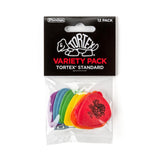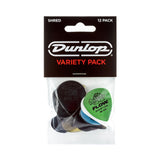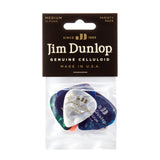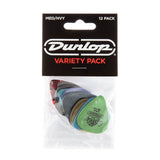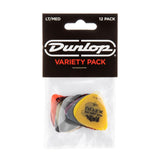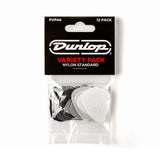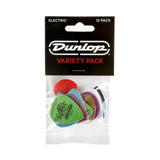Get your guitar playing at its potential with the best locking tuners from Gotoh, Kluson, Sperzel, and many more!
More and more these days we’re seeing guitars come with locking tuners as standard. It used to be that you only really installed locking tuners if you had a tremolo, yet we’re seeing them on hardtail guitars like Telecasters and Tune-o-Matic equipped instruments like LPs.
As manufacturing costs come down, locking tuners become cheaper and thus more manufacturers start installing them on intermediate level instruments. This is great new for the discerning guitar player, many of whom may not be aware of the benefits that locking tuners can offer.
If you’re one of those guitar players then this article is for you. The best locking tuners enhance the performance of your guitar in many ways, from tuning stability, to quick string changes, to enhanced sustain. They’re simply a must have upgrade that will improve any guitar that they’re on! Let's get stuck into the nitty gritty
Locking Tuners: The Lowdown
Buying tuners can be a bit of minefield to negotiate if it’s your first time. From bushings to mounting screw locations, there’s a whole host of considerations you’ll need to take before purchasing and installing a new set of locking tuners. Thankfully for you, here at Northwest Guitars we’ve got bags of experience dealing with tuner installations, so follow our advice and you’ll get on just fine!
Tuner Hole Size
One of the most important things you’ll need to consider is your tuning hole size. Typically there are two tuner types, vintage and modern. Vintage tuners have a press-in bushing that holds the tuner in place whereas modern tuners utilise a threaded collar that’s tightened via a nut. Whilst they’re installed in slightly different ways, it’s actually the size of the tuning post hole that’s the differing factor.
Vintage tuners have a smaller, typically 8mm hole whereas modern tuners tend to use 10mm. This means if you’re converting from one to the other you’ll need to account for this. Changing from modern to vintage tuners is easy enough with a set of conversion bushings, however if you’re wanting to go the other way, you’ll need a reamer to make the hole bigger.
6-in-line vs 3x3
Headstocks typically fall into two configurations, 6-in-line or 3x3. The former was made famous by Fender, featuring on the vast majority of their instruments including the Telecaster, Stratocaster, P-Bass and Jazz Bass. The tight grouping of 6-in-line tuners means that they need to be a particular size to all fit together, as well as having the same orientation for all tuners.
3x3 tuners are famous for being used on Gibson and Epiphone guitars as well as their derivatives. Due to their arrangement on each side of the headstock, the tuners need to go in a certain order otherwise they won’t face the right way, a mistake that will quickly become apparent if you try to install 6-in-line tuners on a 3x3 headstock!
Mounting Screw Location
Mounting screw location varies greatly from guitar to guitar, so its vital to check this before making a purchase. Modern tuners tend to have one mounting screw whereas vintage tuners use two. On modern tuners the angle of the single mounting screw can also differ, sometimes sitting at 90 or 45 degrees from the tuner. Some locking tuners, like Sperzel’s have no mounting screw at all, relying on the attachment via the threaded collar at the front of the headstock.
If you can’t find a set that fits exactly, or you just want to change things up its fairly simple to drill a new hole. Just make sure to mark where you need to drill, use a drill bit slightly smaller than the screw, and wrap some tape around your drill bit at the same length as the screw so you don’t drill too far into the headstock! You can also fill the old hole using a tiny dowel or tooth pick to make sure no moisture gets inside your guitar.
Best Locking Tuners
Northwest Guitars JN07L Locking Tuners
Okay, okay, so there’s a little trumpet blowing going on here, but our own locking tuners are one of the most popular purchases on our entire website which says something about their quality! If you’re dubious, just check out the customer reviews!
Featuring a thumbwheel locking function they keep your strings securely in place, ensuring string changes are an absolute breeze in the process. Solid brass gears give you excellent precision over tuning, as well as enhancing tuning stability.
These tuners are made in the same factory as all Wilkinson hardware, giving you a high quality component at a brilliant price. Available as 6-in-line or 3x3 configurations, they include hex bushings and mounting screws to you can install them quickly and easily.
Shop NWG Tuners here.
Gotoh SD90 Vintage Locking Tuners
Gotoh are one the biggest names in hardware manufacturing, and build for much bigger companies like Ibanez, Yamaha, and Tokai. As the OEM for many guitar parts, you’ve likely played something with Gotoh hardware and not even realised it.
These locking tuners are perfect for players who want to retain the vintage aesthetic of their instrument, whilst benefitting from the enhancements of modern technology. The thumbwheel locking mechanism ensure your strings stay put, looking classy whilst doing so.
These tuners are designed for 3x3 style headstocks like those you’ll find on Gibson and Epiphone instruments. A 1:15 tuner ratio provides impressive accuracy when tuning and it comes supplied with colour matched screws and bushings so you can install straight away.
Shop Gotoh Tuners here.
Sperzel Trim Lok Locking Tuners
Famously used by Nile Rodgers, Sperzel Locking Tuners arrived in 1977 with a unique design that set them apart from the rest. Made in the USA, these tuners were one of the first instances of locking tuners being used commercially.
The Trim-Look system originated in 1983, quickly becoming the benchmark for all locking tuners. The thumbwheel design you see used on many locking tuners originated with Sperzel and it meant guitar players could do away with wrapping the strings around the posts, something that could cause issues with tuning stability.
With staggered string post heights Sperzel’s locking tuners help eliminate the need for using a string tree on guitars with flat headstocks. These six-in-line tuners are designed for fitting onto guitars with modern tuning machines.
Shop Sperzel Tuners here.
Wilkinson EZ-Lok Locking Tuners
Well-known for brilliant offerings as budget prices, Wilkinson hardware is designed in the UK and manufactured in the Far East, resulting in ingenious solutions that are unbeatable value. The unique EZ-LOK system on these tuners sets them apart from others on the list.
Eschewing the typical thumbwheel design of a regular locking tuner, Wilkinson’s EZ-LOK system features 2 string post holes, 90 degrees from one another. When stringing you pull through the first hole, wrap 3/4 of the way around the post, then pull tight through the second hole.
Solid brass gears deliver excellent stability and precision, not that you’ll need to adjust much because they hold their tuning so well. The mounting hole is at 45 degrees so take care to make sure that aligns with those already on your instrument, or you’ll find yourself drilling and filling!
Shop Wilkinson Tuners here.
Kluson MLT33N Locking Tuners
Kluson used to be the standard for guitar tuners from the 1940s to the 1960s. You’ll often hear guitar players refer to tuners as ‘Kluson style’, because they were so prevalent on classic instruments. Sadly they closed shop in the 1980s, but have since re-emerged, revitalised at the turn of the century.
Kluson’s MLT33N Locking Tuners are another that doesn’t have the thumbwheel style locking action. Instead a small divot at the top of the string post provides the locking mechanism, requiring use of a screwdriver or coin to operate.
Sealed and self lubricating, these are high quality tuners a ratio of 1:18 for superb accuracy. A sophisticated clamp element ensures there’s no chance of them unlocking, even with the strongest vibrations.
Shop Kluson Tuners here.
Gotoh SG381 Magnum Locking Tuners
Getting a second entry on this list, Gotoh’s SG381 Magnum Locking Tuners offer guitarists with modern tuners a quick and easy way to upgrade their tuning stability. Probably one of the most popular tuning machine manufacturers out there, you always assured of a great product with Gotoh.
The ‘Rock-Solid’ string post tech offers quiet operation, eliminating any unseemly rattle from the gears in the body assembly and the posts. Elastic components inside maximise the transmission of string vibrations, improving the tuning stability of your guitar.
Each tuner is permanently sealed and lubricated using Gotoh’s ‘Lubri-Coat’ technology, enhancing the lifetime of the tuner by preventing smoother contact between the worm and gear wheel. This also helps enhance the accuracy of the tuner, ensuring you get a stable and consistent turn, every time.
Shop Gotoh Tuners here.

In Conclusion
So there we have it, the best locking tuners available today. Installing a set of these on your guitar is going to greatly improve its performance. Here at Northwest Guitars we highly recommend getting yourself a set, you won’t look back trust us!
Learn More
Read more about Kluson Tuners with our Ultimate Guide.
For more in-depth advice on installing tuners, check out our Gotoh Tuners Guide.
Had your fill of guitar tuners? Get cracking on learning more about Guitar Bridge Types.
















